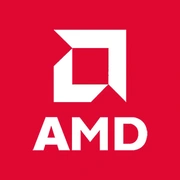AMD A6-5400K

AMD A6-5400K: A Budget Processor for Basic Tasks in 2025
April 2025
1. Key Specifications: Architecture and Features
The AMD A6-5400K processor, released in 2012, belongs to the Trinity line. It is a dual-core chip with two threads, based on the Piledriver architecture (second generation Bulldozer). The manufacturing process is 32 nm, which is considered outdated by modern standards (compared to the 5 nm technology in Ryzen 8000). However, at the time of its release, it allowed for a good balance between price and performance.
Key Features:
- Integrated Radeon HD 7540D Graphics – sufficient for HD video and simple games like Minecraft or CS:GO on low settings.
- Turbo Core 3.0 – automatic overclocking up to 3.8 GHz under single-core load.
- TDP 65 W – moderate power consumption that doesn’t require powerful cooling.
Performance:
Geekbench 6 tests (2025) show modest results:
- 404 points in single-core mode (for comparison, Ryzen 3 7300X scores over 1800).
- 552 points in multi-core (even the budget Intel Celeron G6900 scores around 1200).
2. Compatible Motherboards: FM2 Socket and Chipsets
The A6-5400K uses the FM2 socket, which limits motherboard options to models from 2012 to 2014:
- Chipsets: A55 (basic), A75 (USB 3.0, SATA III), A85X (RAID support, more ports).
- Examples of motherboards: Gigabyte GA-F2A55M-DS2, ASUS A85XM-A.
2025 Selection Tips:
- New FM2 motherboards are not being produced, but they can be found on the second-hand market for $20–$40.
- Look for models with USB 3.0 (A75/A85X chipset) for fast connectivity.
- Check for overclocking support: The A6-5400K features an unlocked multiplier for overclocking.
3. Supported Memory: Only DDR3
The processor works with DDR3 (it does not support DDR4/DDR5). The maximum frequency is 1866 MHz (in dual-channel mode).
Recommendations:
- Use two memory modules (e.g., 2x4 GB) to increase bandwidth. This is critical for integrated graphics: in World of Tanks tests, a 15–20% FPS boost is achieved.
- Avoid memory with frequencies below 1600 MHz—this creates a performance bottleneck.
4. Power Supply: Minimum 300 W
With a TDP of 65 W and no discrete graphics card, a 300–400 W power supply will be sufficient for the system.
Scenarios:
- Without discrete graphics: EVGA 400 N1 ($35) or similar.
- With a GTX 1650-level graphics card: a 450 W power supply will be required (for example, Corsair CX450 — $55).
Important: If planning to overclock, add a power reserve (20–30%).
5. Pros and Cons of A6-5400K in 2025
Pros:
- Ultra-low cost: new processors (if still available) – $30–$40.
- Energy efficiency: suitable for compact PCs or HTPCs.
- Integrated graphics: does not require a separate graphics card.
Cons:
- Outdated platform: DDR3, PCIe 2.0, no NVMe support.
- Weak multi-threading: struggles with rendering or streaming tasks.
- Limited upgrade options: the maximum for FM2 is the Athlon X4 860K.
6. Use Cases: Where A6-5400K is Still Relevant
- Office tasks: Word, Excel, browser with 5–10 tabs.
- Media center: plays 1080p video via HDMI (supports HD audio).
- Light gaming: Stardew Valley, Terraria, PS1/PSP emulators.
- Home server: file storage, VPN, Home Assistant.
User Experience:
A PC owner with an A6-5400K notes: “With an SSD and 8 GB DDR3, the system runs smoothly, but YouTube in 4K sometimes lags.”
7. Comparison with Competitors
Intel Pentium G2030 (Ivy Bridge, 2013):
- Similar price (~$25 on the second-hand market).
- Better single-threaded performance (+10–15%), but Intel HD graphics are inferior.
Modern Alternatives (2025):
- AMD Athlon 3000G (Zen, 2 cores/4 threads, Vega 3) – $60. Supports DDR4, PCIe 3.0.
- Intel Celeron G6900 (Alder Lake, 2 cores/2 threads, UHD 710) – $55.
Conclusion: The A6-5400K falls behind even budget newbies, but may be justified for builds with old hardware.
8. Practical Assembly Tips
- SSD is essential: Kingston A400 240 GB ($25) will reduce OS boot time.
- Cooling: the stock cooler is sufficient, but for overclocking, consider the Deepcool GAMMAXX 400 ($20).
- Check the BIOS: update it for compatibility with the processor.
Example Build (without a graphics card):
- Motherboard: ASUS A88XM-A ($30 used).
- Memory: 8 GB DDR3 1866 MHz ($15 used).
- Storage: 240 GB SSD ($25).
- PSU: 400 W ($35).
- Total: ~$105 (without case).
9. Final Verdict: Who Should Consider the A6-5400K?
This processor should only be considered in three cases:
1. Upgrading an old PC: if you already have an FM2 motherboard.
2. Budget up to $100: for internet browsing and office tasks.
3. Experimentation: building a media center or retro computer.
Alternative: If your budget allows $150–$200, it’s better to choose the Athlon 3000G or Intel Celeron G6900 – they will provide a better future-proof solution.
Conclusion
In 2025, the AMD A6-5400K is a niche solution. It lags behind even the cheapest modern CPUs but remains an option for enthusiasts and those looking to revive old hardware.
Basic
CPU Specifications
Memory Specifications
GPU Specifications
Benchmarks
Compared to Other CPU
Share in social media
Or Link To Us
<a href="https://cputronic.com/index.php/cpu/amd-a6-5400k" target="_blank">AMD A6-5400K</a>